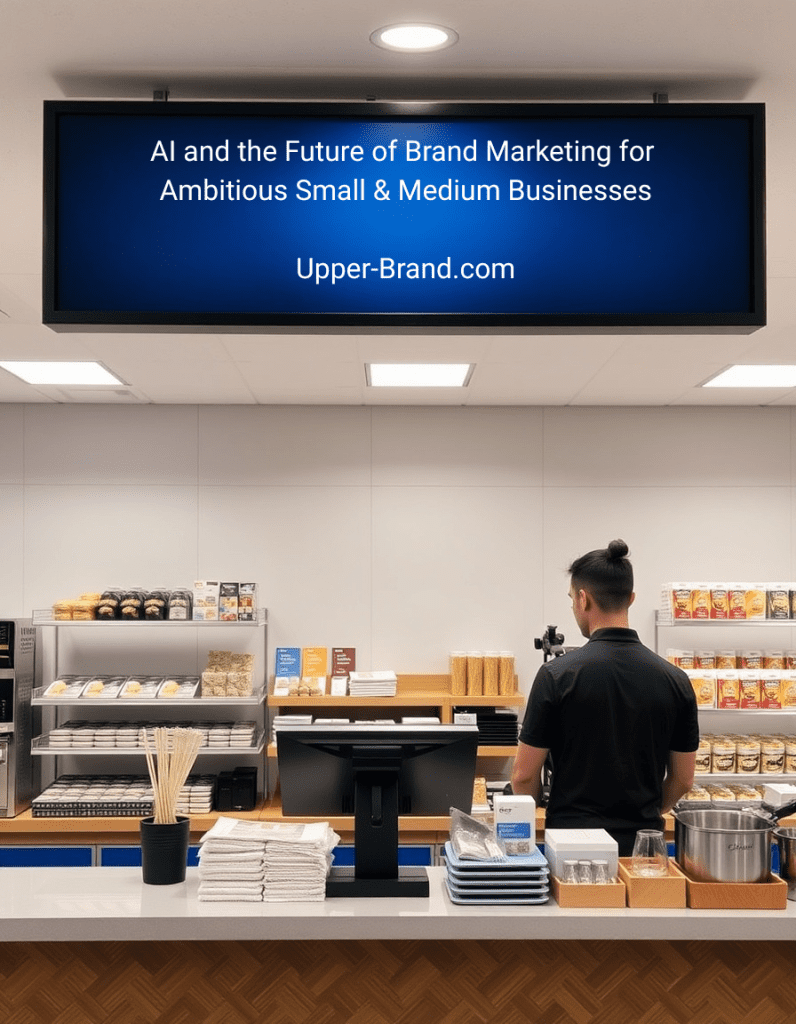FDA’s Embrace of AI Marks a Defining Moment in Innovation Leadership

Introduction: The Moment the Future Went Mainstream
Every industry has its tipping point. For artificial intelligence, the barometer of public trust has always rested with the most risk-averse institutions. When the United States Food and Drug Administration officially activated an enterprise-wide AI platform, the signal blasted across boardrooms worldwide. An agency synonymous with deliberation and meticulous oversight stepped squarely into the world of machine learning. That single decision did more than accelerate regulatory timelines. It propelled AI from an intriguing proof-of-concept to a fully endorsed, government-backed performance engine. In branding terms, the endorsement acts like a million-follower influencer shouting “It works.”
Visionary enterprises now face a pivotal choice. Do they leverage the new momentum to amplify their market authority, or do they risk lagging behind as competitors transform AI into customer-centric experiences? This article outlines why the FDA pivot reshapes the innovation landscape and reveals practical steps for brand-focused companies determined to lead rather than follow.
The Catalytic Signal: Trust Scales Up
Trust is the currency that fuels adoption. In heavily regulated sectors, credibility travels on the back of public agencies that safeguard consumer well-being. When the FDA entrusts AI to sift clinical data, detect safety signals, and improve review efficiency, it grants artificial intelligence an implicit seal of approval. The agency did not merely run a lab test. It operationalized AI at scale, embedding algorithms into missions that protect lives.
For marketing leaders, this shift unlocks two linked advantages. First, consumer fear of AI misfires decreases because a trusted body has validated the tech’s integrity. Second, nervous investors, previously wary of funding AI-heavy projects, now perceive reduced risk. The result is an ecosystem primed for bold experimentation, backed by new pools of capital and a heightened appetite for AI-driven value propositions.
Macro Trends Powered by the FDA’s Move
1. Speed Becomes a Brand Differentiator
In a hyper-competitive landscape, speed is not merely a metric; it is a promise to customers. The FDA reported review cycle reductions approaching a thirty-percent threshold in its pilot studies. Translate that ethos to consumer brands and you get product development sprints, campaign launches, and personalization engines that operate in real time. Brands capable of moving from ideation to market in weeks instead of quarters gain a storytelling edge. They narrate agility, responsiveness, and relevance, values that modern buyers reward with loyalty and referrals.
2. AI Literacy Becomes Table Stakes for Leadership
Executives once delegated data science to siloed analysts. The FDA’s action rewires that assumption. Decision makers who lack AI fluency risk misinterpreting algorithmic outputs and, worse, miscommunicating strategic direction. The new leadership mandate is literacy: understanding model boundaries, bias mitigation, and ethical design. Boards will increasingly screen for directors with AI knowledge, similar to how cybersecurity expertise became a board requirement after high-profile breaches.
3. Regulatory Alignment Shifts from Defensive to Offensive Strategy
Previously, regulatory compliance equaled risk avoidance. Now, forward-looking brands view compliance data as narrative fuel. If a regulator uses AI to expedite verification, brands can use the same architecture to self-audit and publish transparency dashboards. The proactive reveal of sourcing data, safety metrics, or sustainability claims elevates perceived credibility and differentiates the brand from competitors waiting for a subpoena before disclosing anything.
Practical Gains for Brand-Driven Enterprises
Precision Personalization
AI excels at parsing diverse data streams. With public trust rising, customers will more readily share preference data in exchange for hyper-relevant experiences. Imagine a direct-to-consumer skincare brand feeding anonymized dermatologist feedback into a recommendation engine. The model tailors formulations to environmental factors, skin sensitivity, and even local weather. The result: fewer product returns, higher satisfaction, and viral advocacy.
Market Sensing in High Definition
Traditional market research relies on lagging indicators. AI-powered surveillance mines social sentiment, search trends, and point-of-sale data in near real time. The FDA’s spotlight shows that massive data ingestion is feasible and secure. Brand managers can mimic that scale to detect micro-trends before they peak, allowing them to launch capsule collections, limited edition flavors, or timely cause-marketing campaigns that resonate with cultural moments.
Continuous Creative Iteration
Generative AI tools can brainstorm headlines, storyboard videos, and even draft early design mockups. Skeptics worried about original tone or message dilution. The FDA endorsement quells some concerns by demonstrating that human-in-the-loop frameworks maintain integrity. Creative teams can now cycle through more concepts per week without sacrificing quality oversight, giving early-stage ideas a fair trial and preventing tunnel vision.
The Risk Spectrum: Vision Demands Vigilance
No leap forward is risk free. Visionary brands must approach AI adoption with both enthusiasm and meticulous governance.
- Data Privacy: Increased consumer trust does not erase the legal requirements of GDPR, CCPA, or PIPEDA. Transparent data collection policies and clear opt-ins remain non-negotiable.
- Brand Voice Consistency: Generative text models mimic patterns. Without a brand style guide coded into prompt design, messages may drift. Clarity in tone, vocabulary, and cultural references must be embedded at every touchpoint.
- Algorithmic Bias: The FDA keeps humans supervising AI outputs. Brands should mirror that safeguard, especially in sensitive domains like hiring algorithms or financial recommendations. Periodic audits and diverse training datasets can sidestep reputational fallout.
Case Studies: Momentum in Action
Pharma-Adjacent Wellness Start-Up
A Toronto-based startup offering personalized vitamin packs integrated a machine learning model to correlate health questionnaire data with third-party clinical studies. With the FDA’s AI use bolstering public confidence, customer sign-ups surged thirty percent in the quarter following a transparency campaign that explained the model’s safety filters.
Luxury Fashion House
A New York label leveraged AI to optimize micro-production runs based on predictive demand analytics. Return rates declined by twelve percent, gross margin improved, and the brand recast itself as a sustainability leader, proving that technology can coexist with exclusivity.
Multinational Food Chain
A fast-casual chain employed computer vision to monitor kitchen workflows, trimming average order wait time by seventy seconds. Post-deployment surveys reported a measurable uplift in perceived freshness and service quality, key drivers in the brand’s Net Promoter Score.
Charting the Vision: Three Strategic Playbooks
1. Ecosystem Partnerships
The new frontier belongs to collaborative ecosystems. Brands should form alliances with AI research labs, biotech firms, or even competitors in adjacent categories to co-create models, share anonymized data, and accelerate breakthroughs. Joint ventures reduce capital burden and foster cross-discipline innovation.
2. Transparent Storytelling
Consumers crave authenticity. Share snapshots of AI pipelines the way chefs share farm-to-table sourcing stories. Behind-the-scenes content featuring data scientists and product managers humanizes technology and strengthens affinity.
3. Future-Back Planning
Instead of retrofitting AI into existing processes, begin with a ten-year brand vision and work backward. Map how machine intelligence can unlock each milestone. This method prevents piecemeal deployments and ensures that each new capability ladders to a cohesive market narrative.
Conclusion: Elevate or Get Left Behind
The FDA’s embrace of AI transcends industry silos. It speaks to a broader cultural readiness for algorithmic partnership in daily life. Visionary, marketing-forward enterprises that transform this regulatory milestone into consumer-facing innovation will earn disproportionate mindshare and loyalty. The runway is clear, investor optimism is high, and the competitive gap is still wide. Brands that seize the moment will not merely ride a trend; they will define the era.










